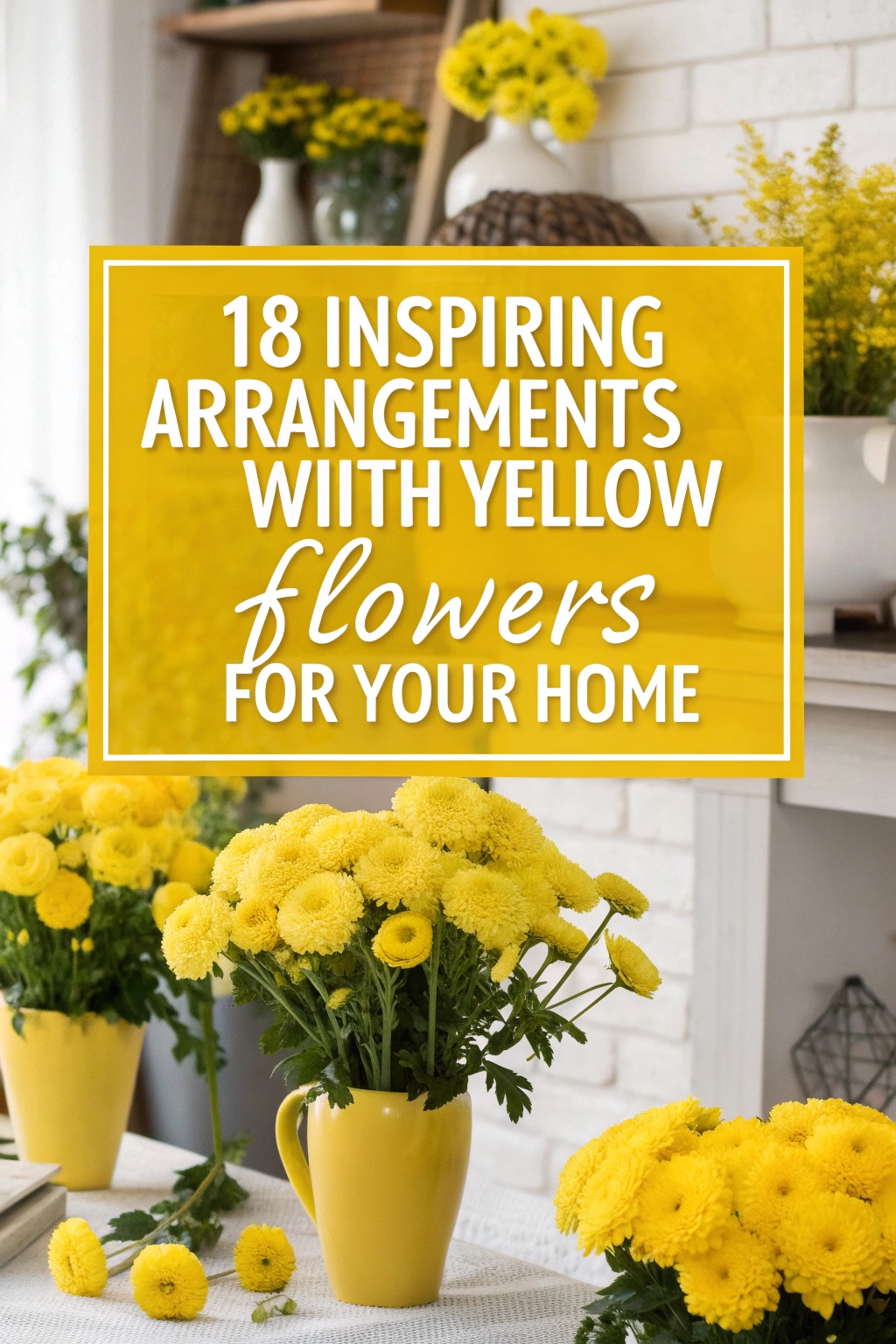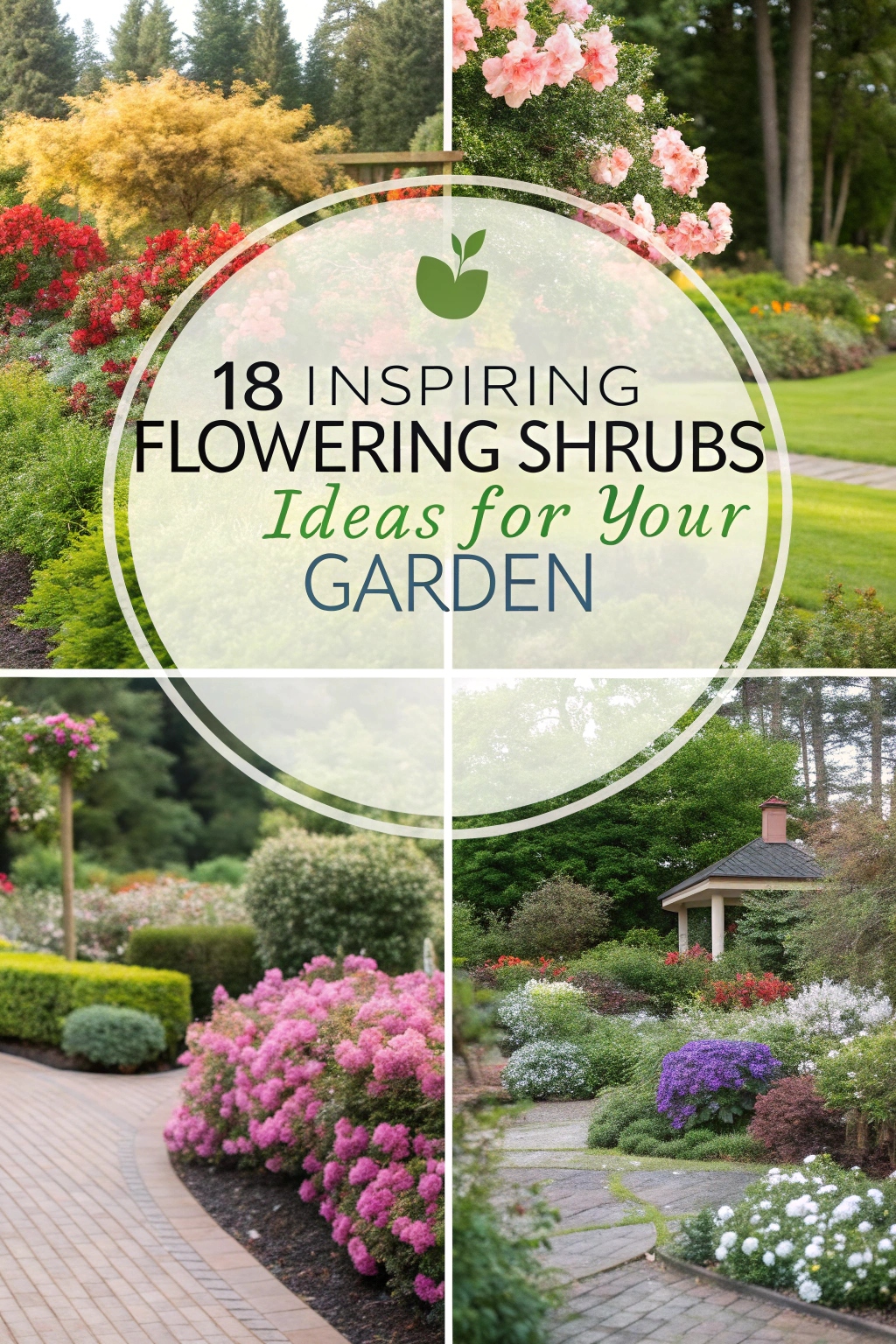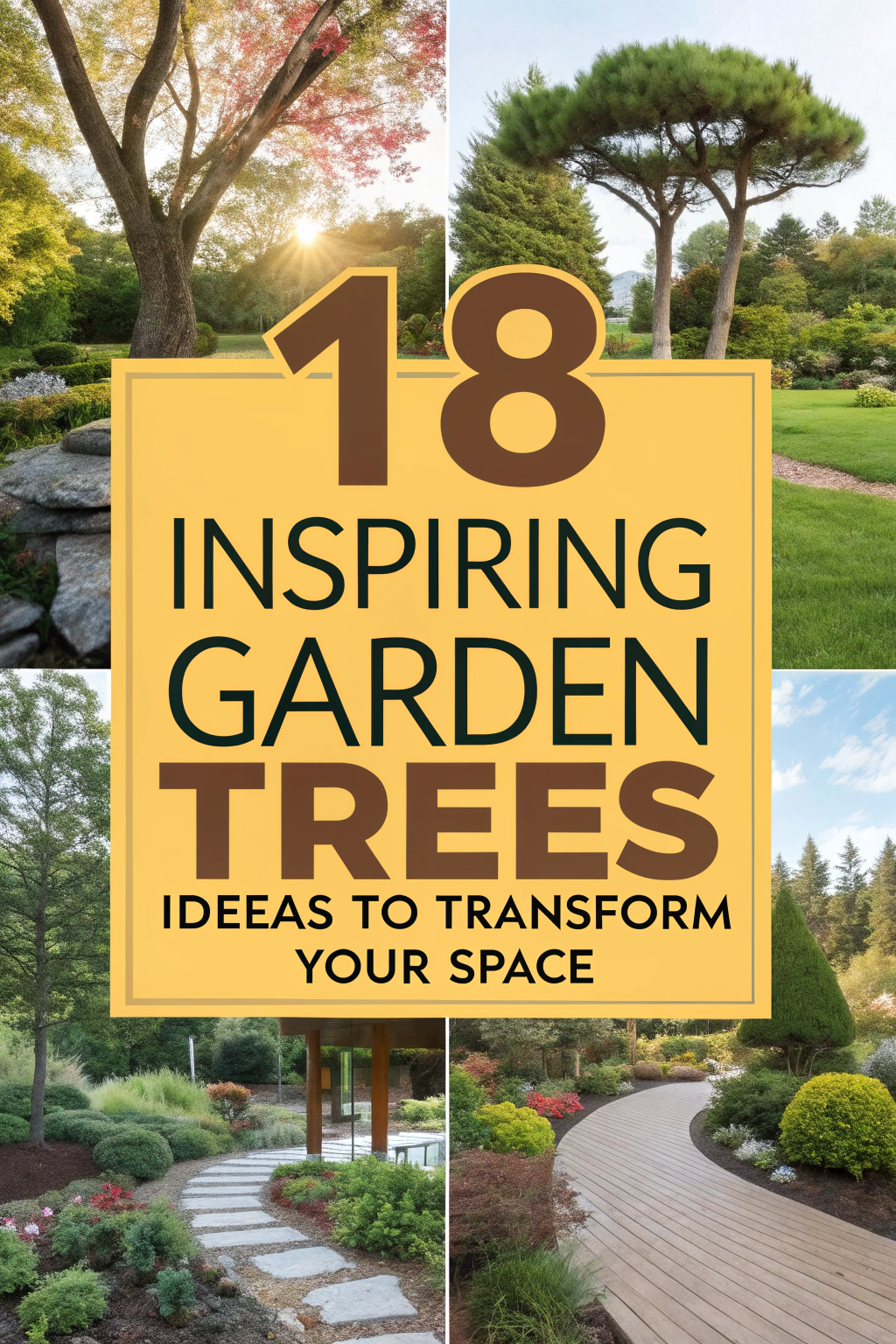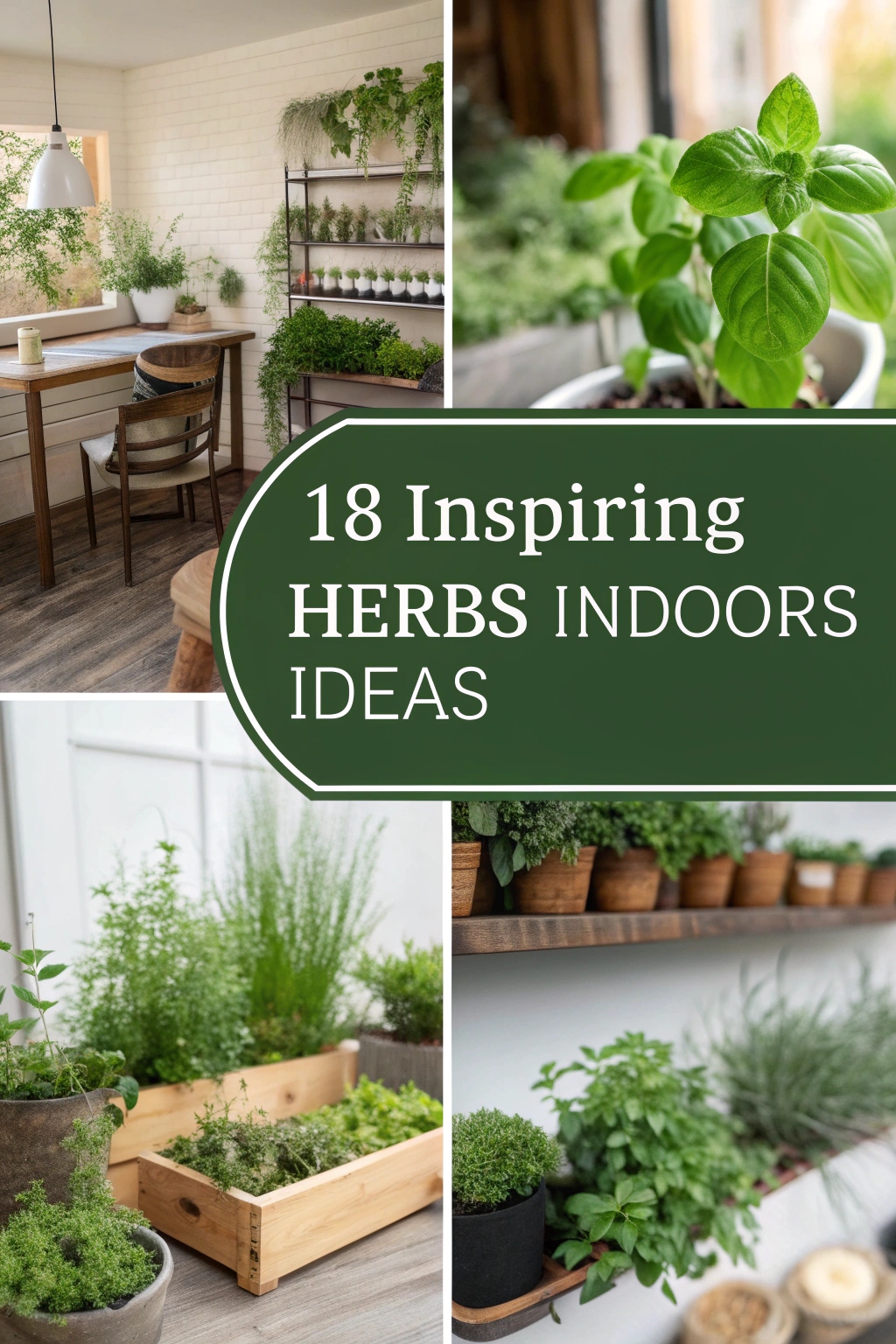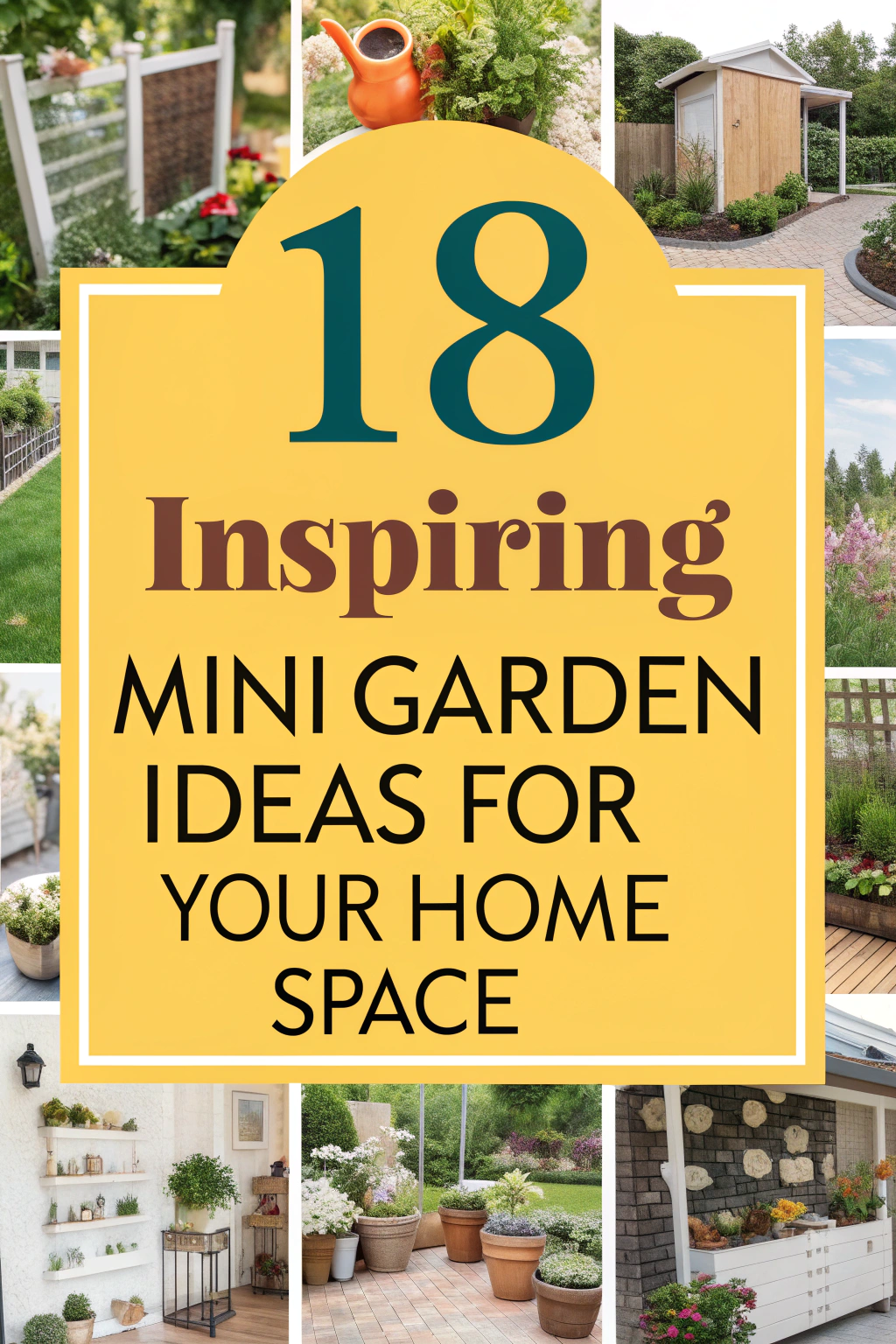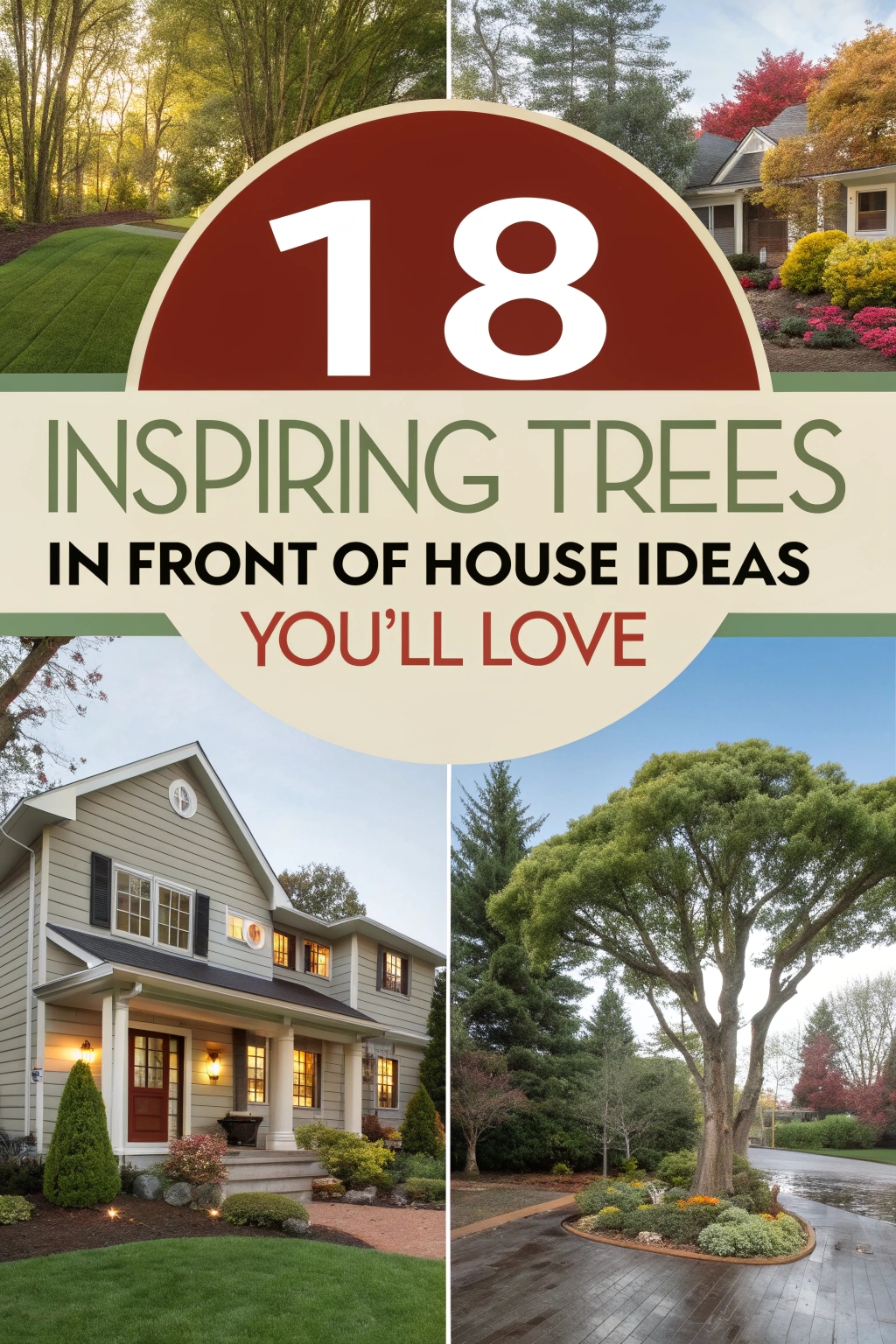18 Inspiring Foundation Planting Ideas for Your Home
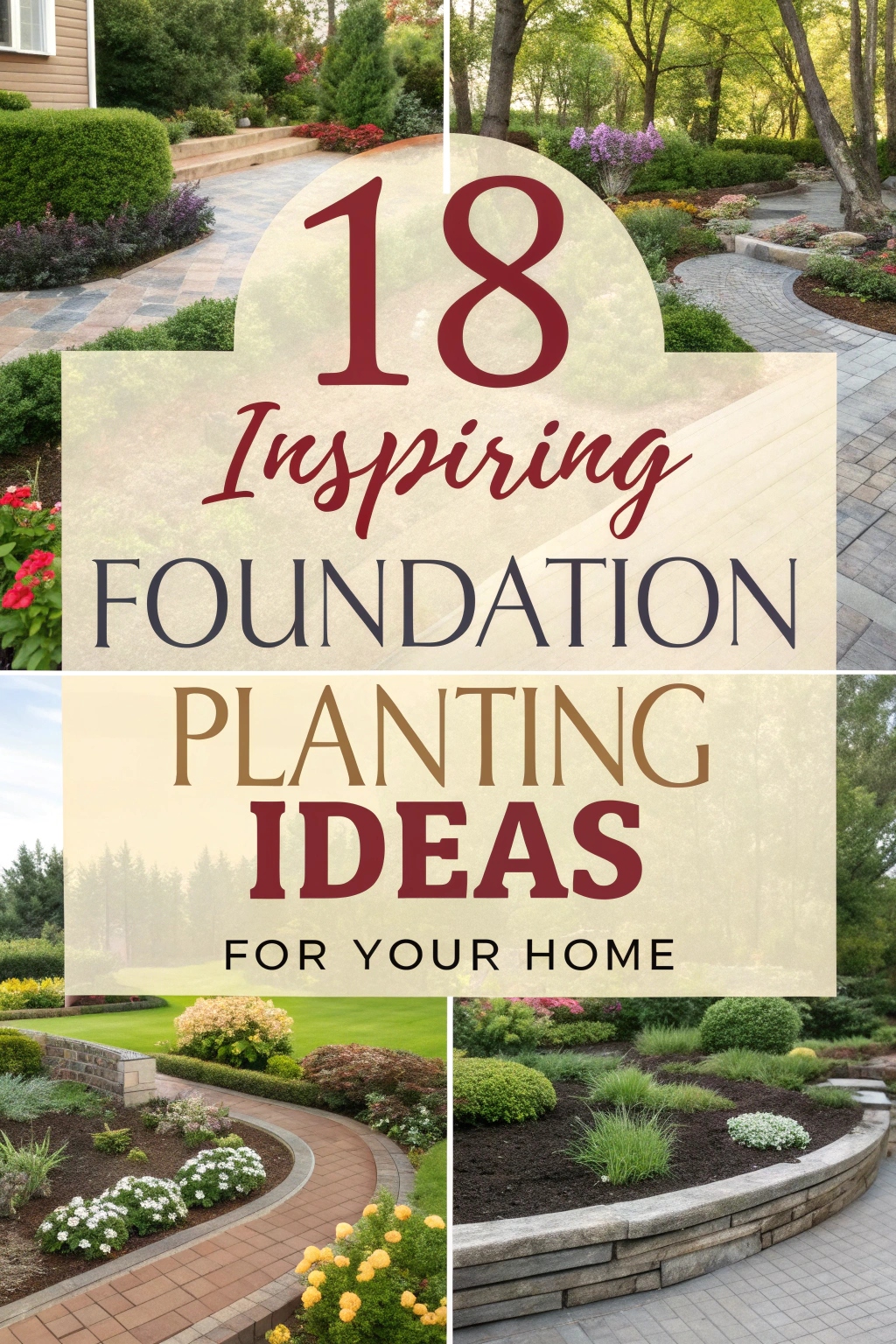
You’ve got the power to transform your home’s curb appeal with foundation planting that blends precision and creativity. Imagine framing your house with structured evergreens or vibrant perennials, each layer meticulously chosen for texture and seasonal impact. By integrating innovative designs like asymmetrical native layouts or vertical vine accents, you can craft a landscape that’s both functional and striking. Curious how to make it happen? Stick around for the details.
Evergreen Borders for Timeless Appeal
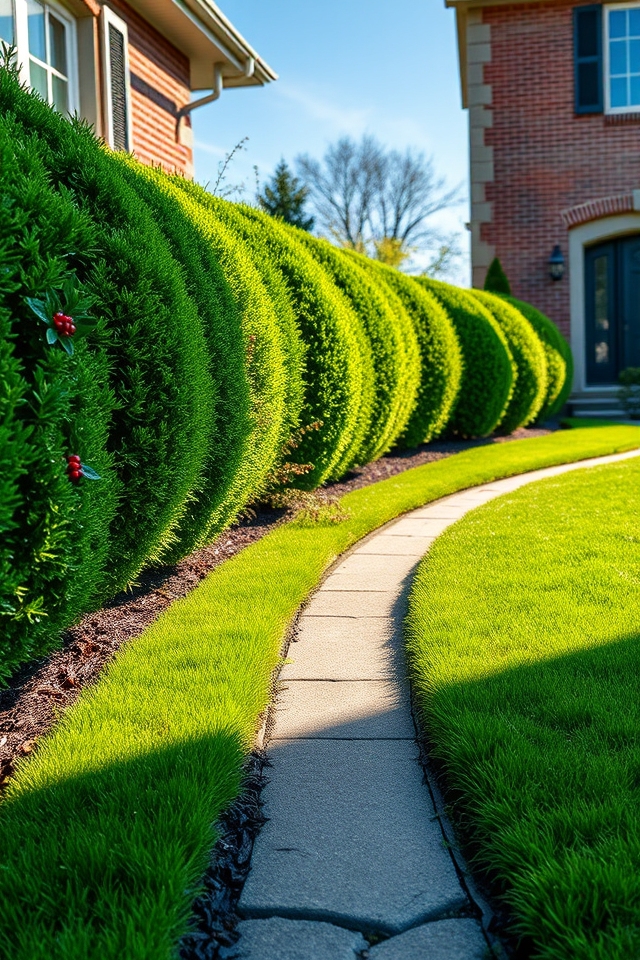
Evergreen borders offer a classic and enduring look for foundation plantings. These hardy plants, such as boxwood, yew, or holly, maintain their lush green foliage year-round, providing consistent structure and color to your landscape. They create a neat, polished border that frames your home beautifully, while also offering low-maintenance appeal. Perfect for defining edges or softening harsh lines, evergreen borders guarantee timeless elegance and privacy, enhancing your property’s curb appeal in every season.
Layered Shrubs for Depth and Texture
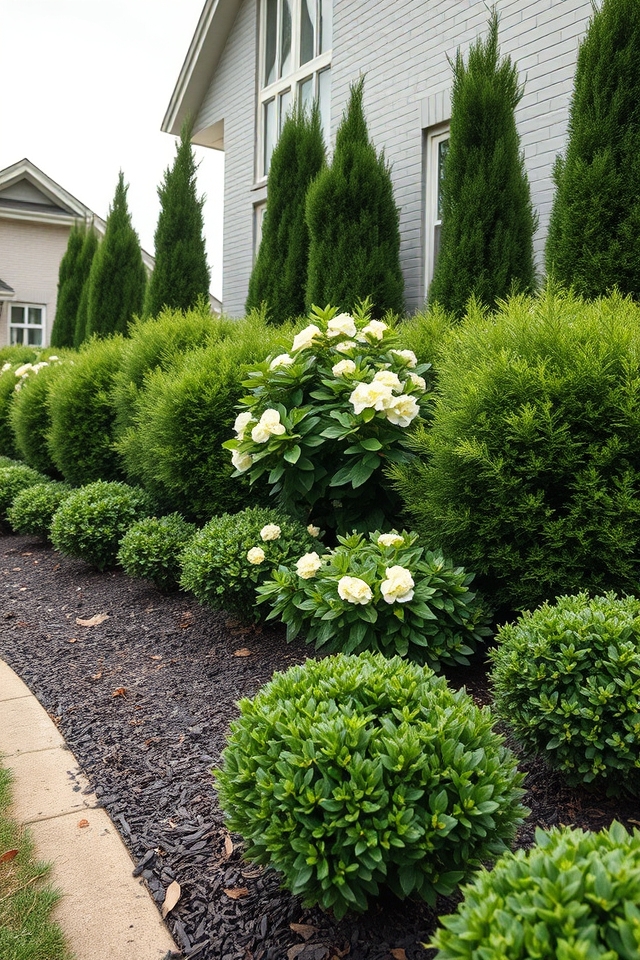
Layered shrubs are an excellent way to add depth and texture to foundation plantings. By combining shrubs of varying heights, shapes, and foliage types, you can create a visually dynamic border around your home. Place taller shrubs at the back near the foundation, medium-sized ones in the middle, and shorter varieties in front. Mix evergreen and deciduous shrubs for year-round interest, ensuring a lush, multi-dimensional look that enhances curb appeal.
Colorful Perennials for Seasonal Pops
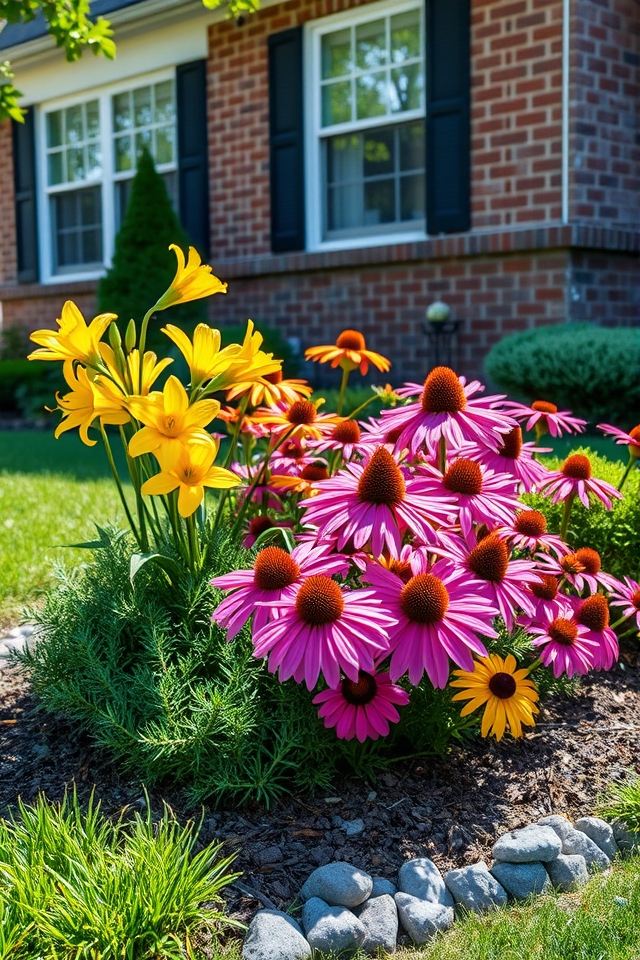
Colorful perennials are a fantastic choice for foundation planting, offering seasonal bursts of vibrant hues. Plants like daylilies, coneflowers, and black-eyed Susans bring bright yellows, pinks, and purples to your landscape, evolving with the seasons. These hardy plants return year after year, providing consistent beauty with minimal maintenance. Pair them with evergreen shrubs for contrast, ensuring your foundation beds remain visually appealing throughout the year, even during dormant periods.
Low-Maintenance Ground Covers
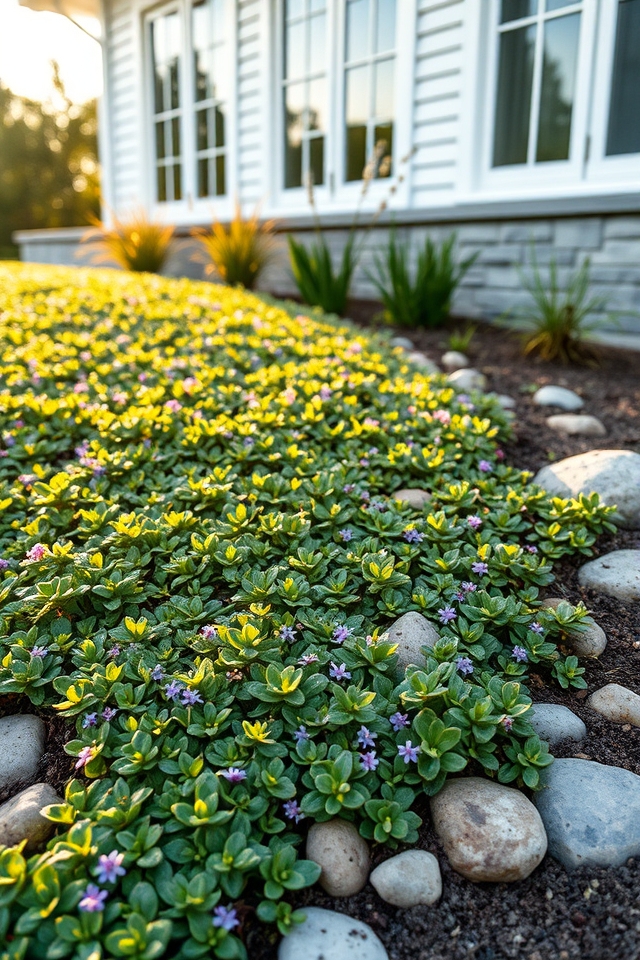
Low-maintenance ground covers are an excellent choice for foundation plantings, as they reduce the need for frequent care while adding beauty to your landscape. Options like creeping thyme, sedum, and vinca minor thrive with minimal watering and pruning. These plants spread naturally, covering bare soil and suppressing weeds. Their dense growth also helps prevent soil erosion around your home’s foundation, making them both practical and visually appealing for long-term landscaping solutions.
Symmetrical Designs for Formal Elegance
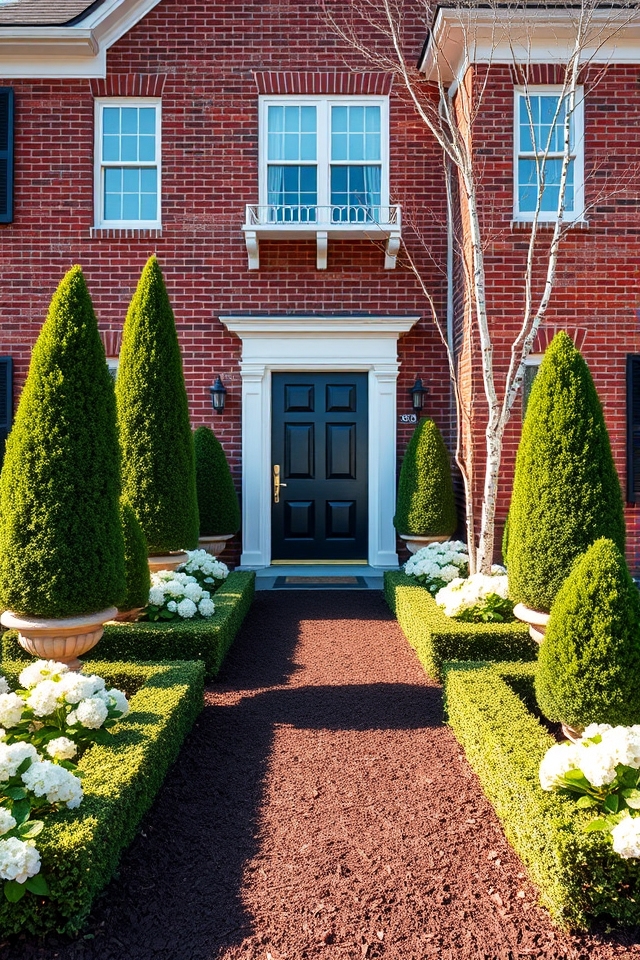
Symmetrical designs in foundation planting create a sense of formal elegance, ideal for traditional or classic home styles. By mirroring plants, shrubs, or trees on either side of a central point, such as a front door, you achieve balance and harmony. Use evenly spaced evergreens, trimmed hedges, or matching flower beds to enhance the structured look. This approach not only frames the home beautifully but also conveys a polished, welcoming aesthetic.
Asymmetrical Layouts for Casual Charm
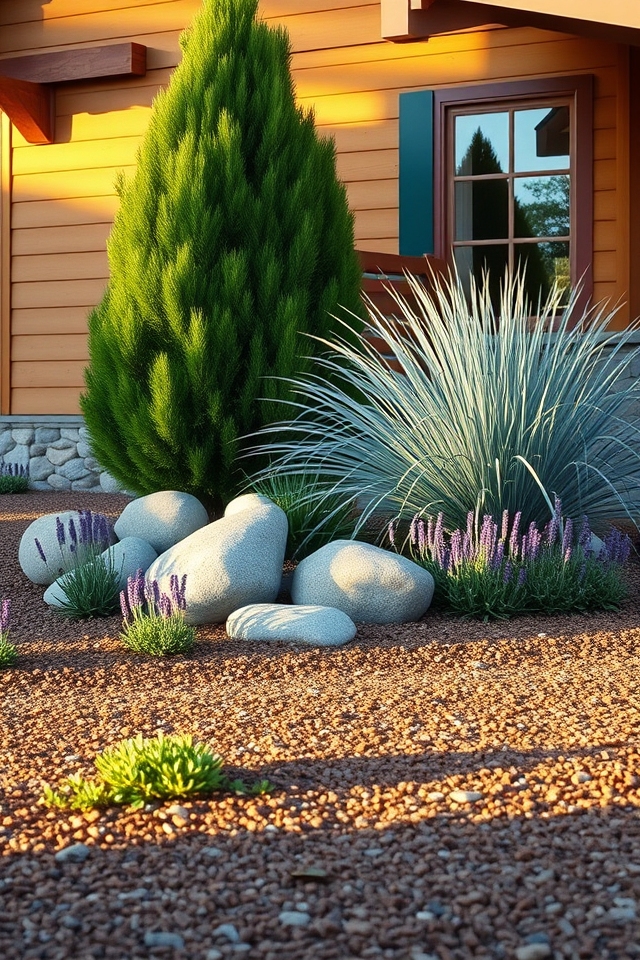
Asymmetrical layouts in foundation planting offer a relaxed, casual charm that breaks away from rigid symmetry. By placing taller shrubs or trees on one side and balancing them with lower plants or decorative elements like rocks on the other, you create a natural, organic feel. Mix textures and colors, such as combining broad-leaf evergreens with feathery grasses, to enhance visual interest. This approach works well for informal or cottage-style homes, adding personality and warmth.
Ornamental Grasses for Modern Flair
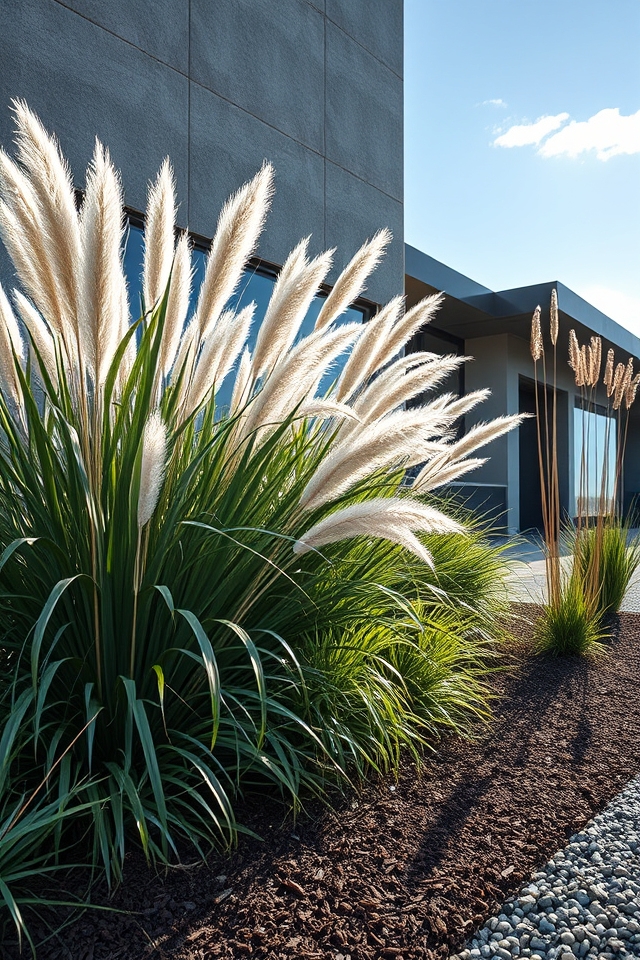
Ornamental grasses bring a modern, dynamic flair to foundation plantings with their graceful textures and movement. Varieties like Miscanthus, Pennisetum, or Calamagrostis offer height and structure, softening harsh building lines while adding visual interest. Their feathery plumes and seasonal color changes—from vibrant greens to golden hues—create a contemporary look. Low-maintenance and drought-tolerant, these grasses thrive in diverse conditions, making them an ideal choice for a stylish, hassle-free landscape.
Flowering Bushes for Vibrant Accents
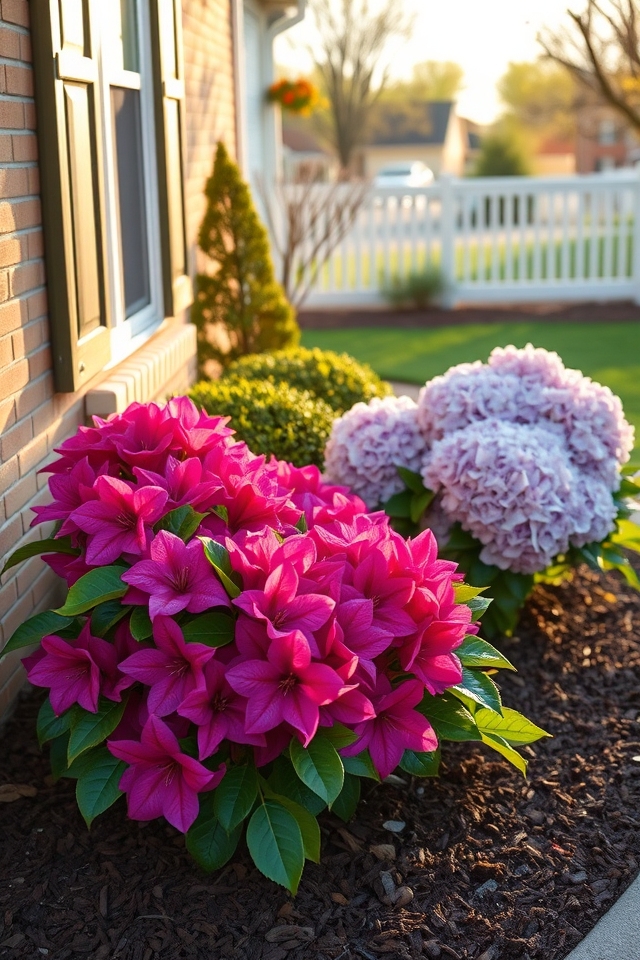
Flowering bushes add vibrant color and charm to foundation plantings, creating eye-catching accents around your home. Options like azaleas, with their bright blooms in spring, or hydrangeas, offering lush flowers in summer, bring seasonal interest. Choose varieties that match your climate and soil conditions for best results. Their dynamic hues and textures soften harsh lines of buildings, enhancing curb appeal while providing a welcoming atmosphere to entryways and walkways.
Mixed Beds for Dynamic Variety
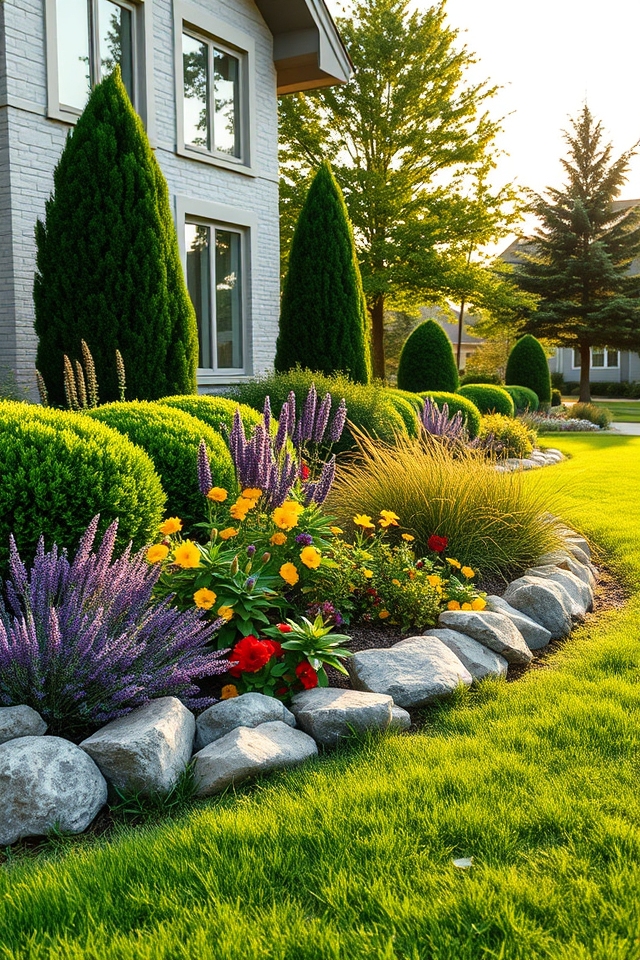
Mixed beds in foundation planting bring dynamic variety to your home’s landscape by combining different plant types, textures, and colors. Incorporate a mix of evergreen shrubs, flowering perennials, and ornamental grasses to create visual interest throughout the seasons. Vary heights and shapes for depth, placing taller plants at the back and shorter ones in front. This approach not only enhances curb appeal but also supports local pollinators with diverse blooms.
Dwarf Trees for Subtle Height
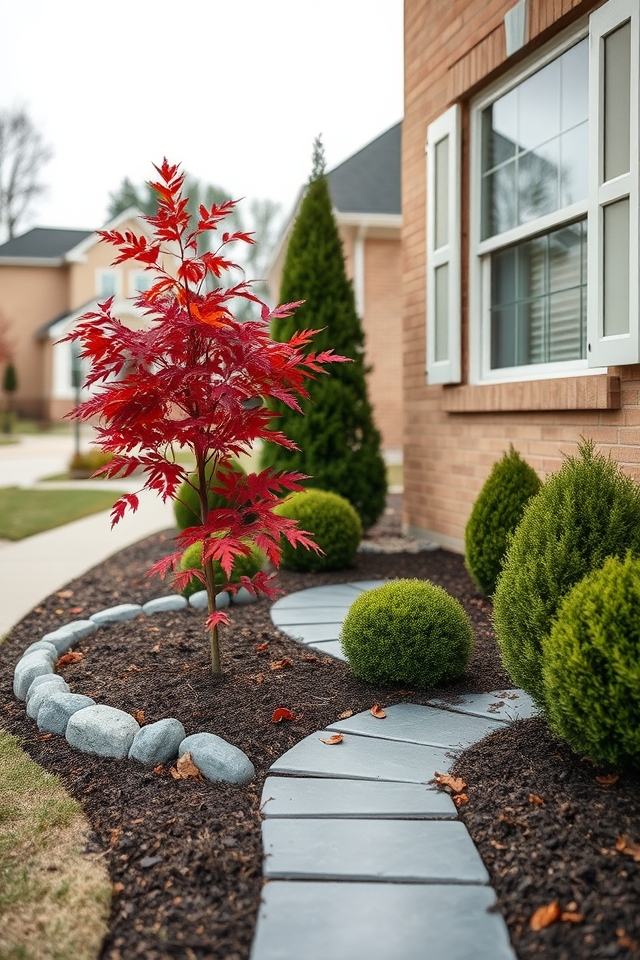
Dwarf trees are an excellent choice for foundation planting, adding subtle height without overwhelming the space. Varieties like dwarf Japanese maple or dwarf crape myrtle offer compact growth, vibrant foliage, and seasonal interest with colorful leaves or blooms. These trees fit well near home entrances or corners, providing structure and balance. Their smaller stature guarantees they won’t block windows or grow too large, maintaining a tidy and proportional look for your landscape.
Native Plants for Eco-Friendly Style
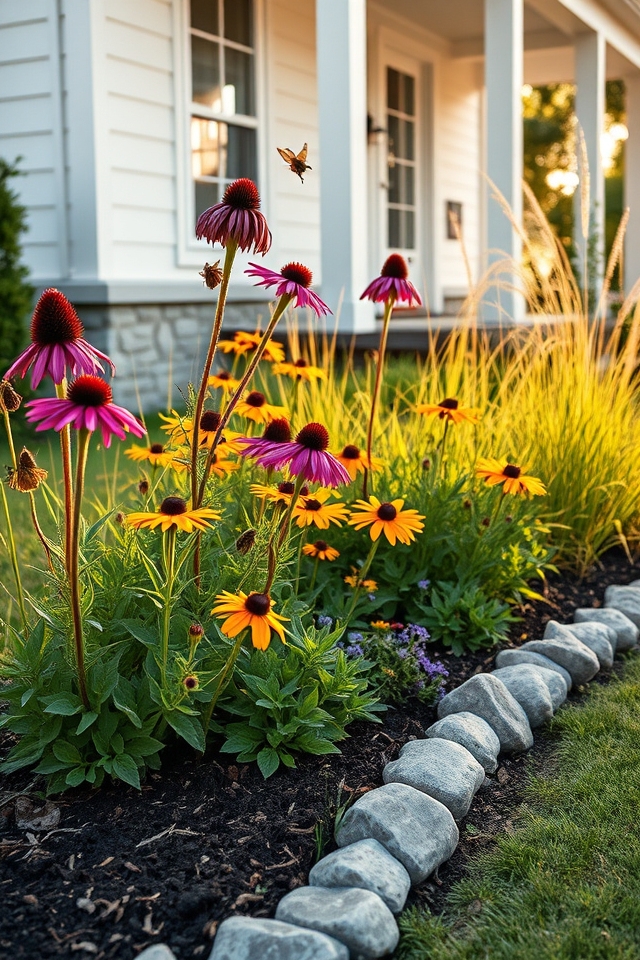
Incorporating native plants into your foundation planting is an eco-friendly choice that supports local ecosystems. These plants are adapted to your region’s climate and soil, requiring less water and maintenance than non-native species. They also attract pollinators like bees and butterflies, promoting biodiversity. Options such as coneflowers, black-eyed Susans, or native grasses can add texture and color while reducing your environmental footprint and creating a sustainable, beautiful landscape around your home.
Sculpted Hedges for Clean Lines

Sculpted hedges are an excellent choice for foundation planting, offering clean, structured lines that frame a home with elegance. These hedges, often made from boxwood or yew, can be trimmed into precise shapes, creating a polished and formal look. They act as a living border, enhancing architectural features while providing a low-maintenance, evergreen backdrop. Regular pruning maintains their neat appearance, making them ideal for defining spaces and adding timeless sophistication to any landscape.
Shade-Loving Greens for Tricky Spots
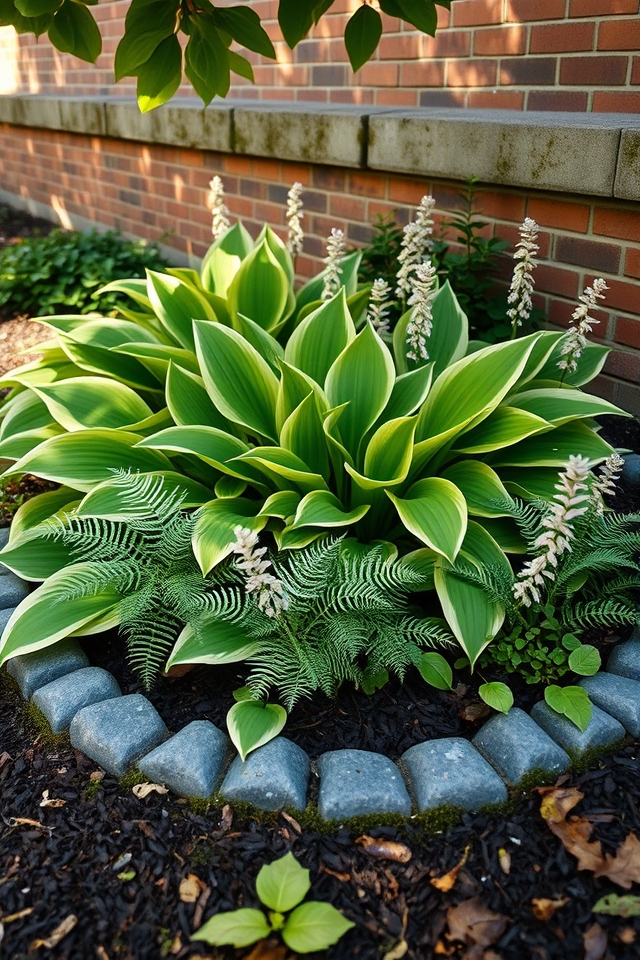
Shade-loving greens are perfect for tricky spots around your home’s foundation where sunlight is limited. Plants like hostas, ferns, and astilbes thrive in low-light conditions, adding lush texture and color to these areas. Hostas offer broad, vibrant leaves, while ferns provide delicate, feathery fronds. Astilbes bring soft, plume-like flowers in shades of pink, white, or red. These perennials are low-maintenance and ideal for creating a serene, shaded foundation garden.
Bold Foliage for Striking Contrast
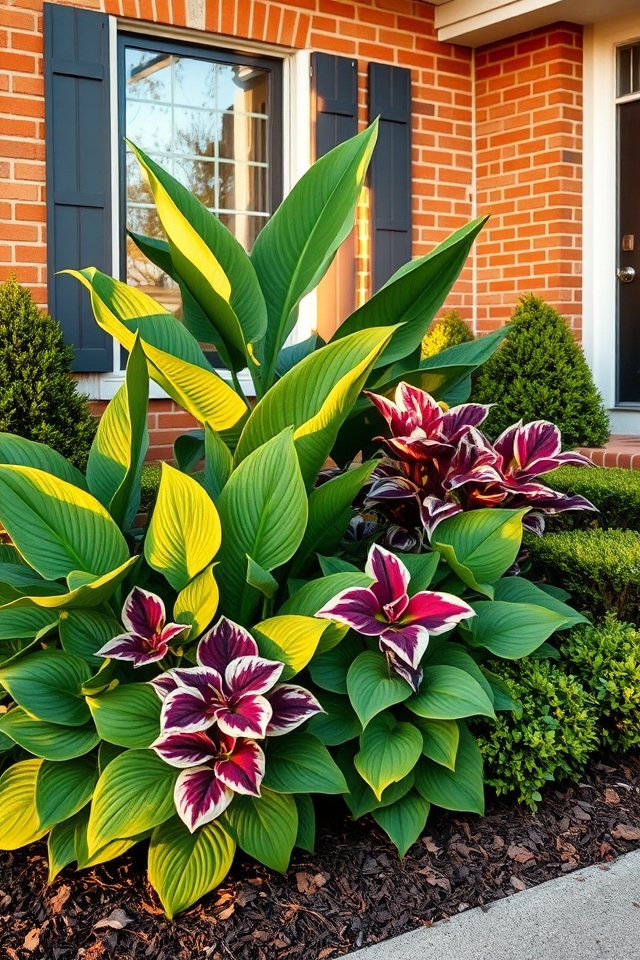
Bold foliage can transform foundation plantings by creating striking contrast against a home’s exterior. Opt for plants with large, vibrant leaves or unique textures, such as hostas, elephant ears, or coleus, to draw the eye. Deep greens, purples, or variegated patterns stand out against brick or siding, adding depth and drama. Pair with simpler shrubs or flowers to balance the design, ensuring the bold foliage remains the focal point of your landscape.
Seasonal Blooms for Year-Round Beauty
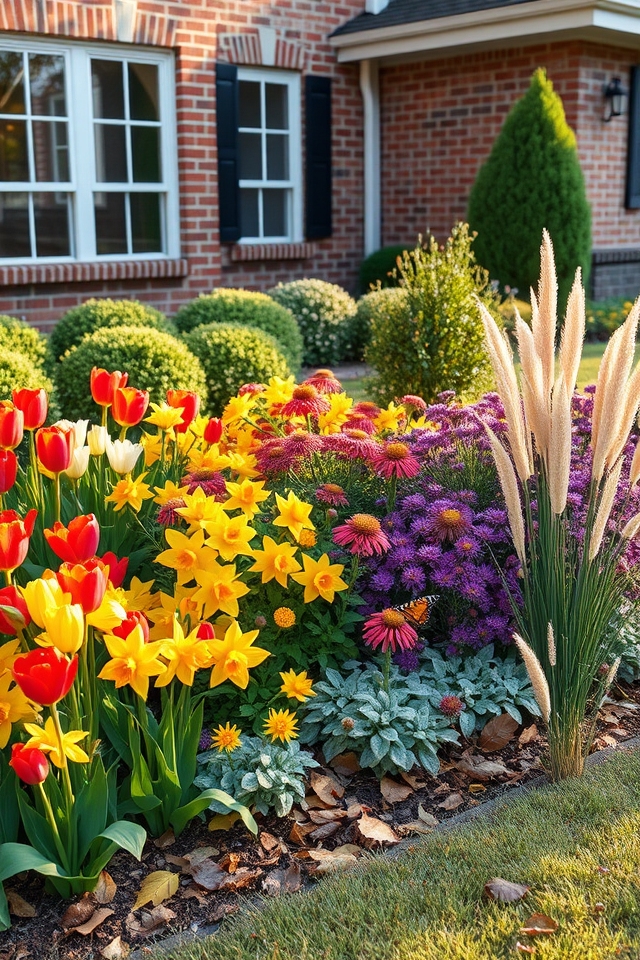
Incorporating seasonal blooms into your foundation planting guarantees year-round beauty around your home. Choose spring bulbs like tulips and daffodils for early color, followed by summer perennials such as daylilies and coneflowers. In fall, asters and mums bring vibrant hues, while winter interest can be achieved with evergreen shrubs and ornamental grasses. By planning for each season, your landscape remains dynamic and visually appealing throughout the year.
Rock and Mulch Combos for Easy Care
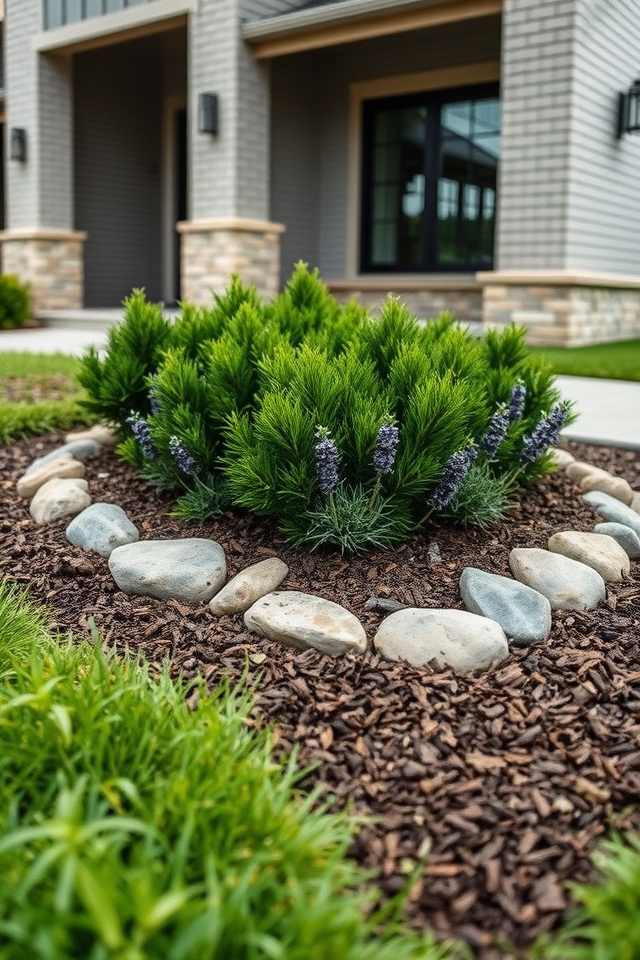
Combining rocks and mulch in foundation plantings offers a low-maintenance solution for busy homeowners. Rocks provide a durable, weed-resistant base that reduces the need for frequent upkeep, while mulch adds a soft, organic touch that retains moisture and nourishes the soil. This combo works well around shrubs and perennials, creating a tidy, polished look. Choose contrasting colors, like dark mulch with light rocks, to enhance visual appeal and define planting areas.
Vertical Accents With Climbing Vines
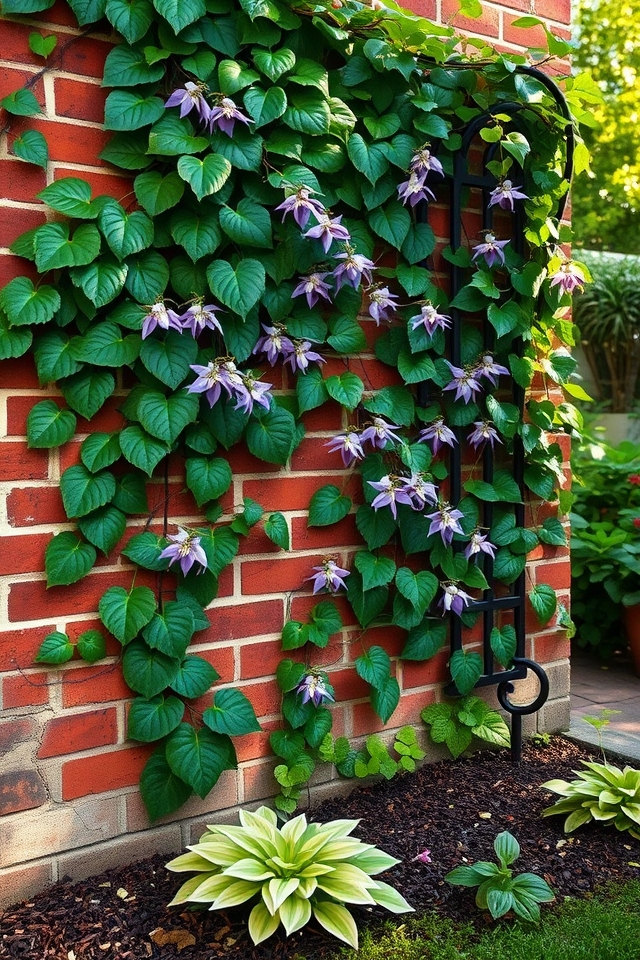
Climbing vines are a fantastic way to add vertical interest to foundation plantings. These versatile plants can scale trellises, walls, or fences, softening hard edges and creating a lush, green backdrop. Popular choices include clematis, with its vibrant blooms, and ivy, known for its dense, evergreen coverage. Vines like honeysuckle attract pollinators while adding fragrance. Secure proper support structures and consider the vine’s growth habits to prevent damage to your home’s exterior.
Pathway Edging for Defined Spaces
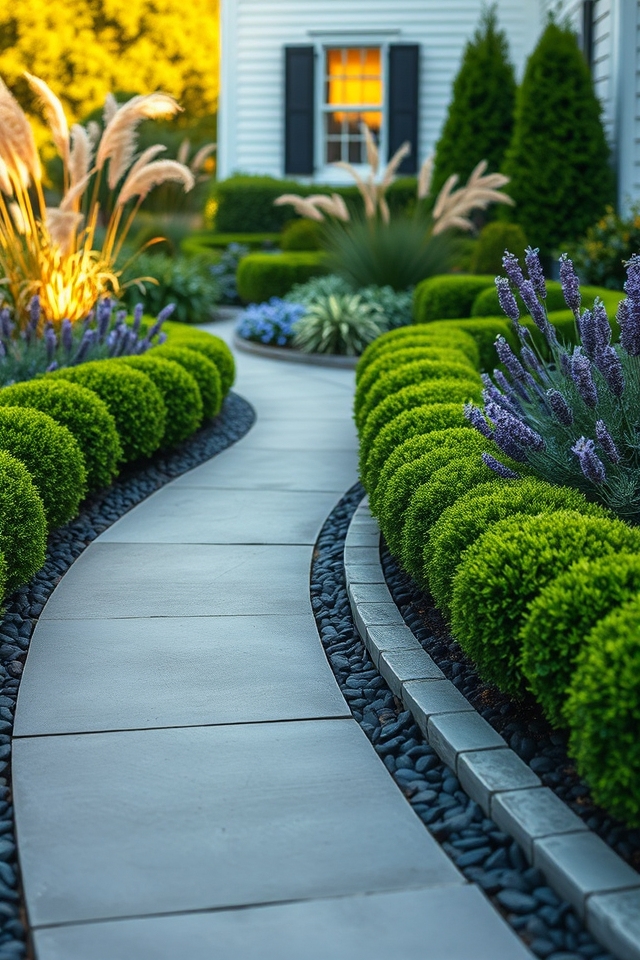
Pathway edging is a fantastic way to define spaces in your foundation planting design. By lining walkways with low-growing plants like boxwood, lavender, or ornamental grasses, you create clear boundaries that guide the eye and enhance structure. Choose plants with neat growth habits to maintain a tidy look, and consider incorporating small stones or mulch for added contrast. This technique not only organizes your landscape but also adds charm and functionality to pathways.
